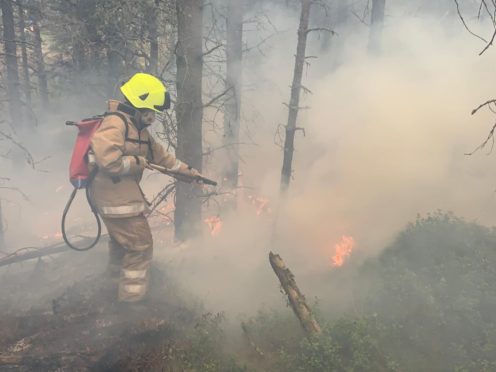Fire union bosses are blaming a shock number of sickness absences in the north of Scotland on stress relating to cuts in staff since the controversial merger into one force.
A Freedom of Information request by the Press and Journal has revealed the Scottish Fire and Rescue Service (SFRS) had 140 whole-time staff across the Highlands, Moray, Aberdeenshire and Aberdeen reporting sickness absences in a seven-month period last year.
The Fire Brigade Union (FBU) claim this is a direct result of added pressure being placed on staff following cuts after the eight former service areas merged into one organisation.
Denise Christie Scottish Secretary of the FBU said there is a fear of rising sickness levels across the north, adding: “It’s extremely concerning that there appears to be an increase in the number of firefighters suffering from work related stress.
“The FBU have consistently highlighted the warning signs of firefighters being asked to do more with less resources.
“We have seen a cut of nearly 15% to the frontline, impacting on the experience of firefighters within the Service.
“This ultimately adds pressure on those who feel morally obliged to cover the shortfalls with overtime. Whether it’s’ to keep fire appliances on the run, control rooms adequately staffed or on call officers availability.”
The SFRS was unable to provide sickness levels for previous years because of the merger, but the FBU claims it is constantly on the rise due to stress as a result of staff shortages.
Figures from the Scottish Fire and Rescue Service show 956 jobs have been cut since the service was merged into a single service in 2013.
Of those, 667 were frontline firefighters with another 289 job losses coming from control or support roles.
They said that in 2011/12 there was a total staff cover of 9040, down to 7,776 in the last financial year, down 14%.
>> Keep up to date with the latest news with The P&J newsletter
Chris McGlone, executive council member for the FBU in Scotland, said: “We were told that the move to a single fire and rescue service would protect frontline outcomes and improve the service the public receive.
“Since then, we have seen a year on year erosion of front line control and firefighter numbers and a lack of urgency at the top of the organisation to address these losses. Experience tells us that it is the public who will ultimately pay the price.”
The FBU added that firefighter shortages are now hitting the frontline, with up to 6 wholetime fire engines per day being routinely removed from service due to a lack of available firefighters to crew them.
Liz Barnes, the SFRS director of people and organisational development, said: “The safety and well-being of our staff remains a key priority.
“We are acutely aware of the importance of this area and we continually review our processes to ensure equitable access to key support services across Scotland.
“We have effective arrangements in place including a dedicated health and wellbeing department resourced by qualified health professionals. This is supported by specialist materials for both staff and management.
“We continue to develop our data monitoring systems to better understand the causes of such absence and inform how we provide support to our staff.”
She added: “The Scottish Fire and Rescue Service continues to attend at every emergency and is committed to protecting communities across the country.
“We continuously review and plan the resources required on our front line, and where we identify any resourcing needs we will work as a national service to cover that requirement.”
